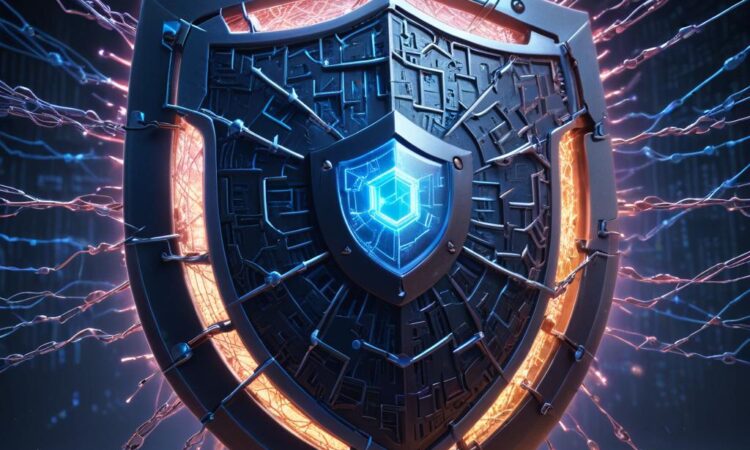Increased Focus on Web3 Security
The burgeoning adoption of Web3 technologies has brought into sharp focus the critical need for robust and comprehensive security measures. The decentralized nature of these platforms, while offering numerous advantages, also presents unique vulnerabilities that malicious actors are actively exploiting. This has sparked intense discussions and a significant increase in efforts aimed at protecting users from a wide range of threats, including scams, hacks, and sophisticated exploits targeting both decentralized applications (dApps) and the underlying blockchain networks themselves.
The rapid growth of the Web3 ecosystem, fueled by innovations in blockchain technology, decentralized finance (DeFi), and non-fungible tokens (NFTs), has attracted a substantial influx of both users and developers. This rapid expansion, however, has outpaced the development of mature security protocols and practices, creating a fertile ground for malicious activity. The consequences of security breaches in the Web3 space can be devastating, leading to significant financial losses for users, reputational damage for projects, and a potential erosion of trust in the overall ecosystem.
One of the most prevalent threats facing Web3 users is phishing scams. These scams often involve deceptive websites or emails designed to trick users into revealing their private keys or seed phrases, granting attackers complete control over their digital assets. The sophistication of these phishing attempts continues to evolve, making it increasingly challenging for even experienced users to identify and avoid them. Education and awareness campaigns are crucial in mitigating the risk posed by phishing, emphasizing the importance of verifying the authenticity of websites and communications before taking any action.
Hacks targeting decentralized applications (dApps) are another significant concern. Many dApps are built on relatively new technologies, and the smart contracts that govern their functionality can contain vulnerabilities that attackers can exploit to gain unauthorized access to funds or manipulate the application’s behavior. Rigorous auditing and security testing of smart contracts are essential steps in mitigating this risk, although even thoroughly audited contracts can be vulnerable to unforeseen attacks. The \”rug pull\” phenomenon, where developers abandon a project and abscond with user funds, also highlights the importance of due diligence and careful selection of projects to engage with.
Beyond dApps, the underlying blockchain networks themselves can be targets of attacks. While blockchains are designed to be highly secure, vulnerabilities can still exist in the consensus mechanisms or other aspects of the network’s architecture. 51% attacks, where a malicious actor controls more than half of the network’s hashing power, can potentially allow them to reverse transactions or manipulate the blockchain’s history. While less common, these attacks highlight the need for robust and resilient blockchain designs.
Addressing the security challenges facing Web3 requires a multi-faceted approach. This includes improving the security of smart contracts through rigorous auditing and testing, enhancing user education and awareness to prevent phishing and social engineering attacks, and developing more robust and resilient blockchain protocols. Furthermore, the development of standardized security practices and industry-wide collaboration are essential to building a more secure and trustworthy Web3 ecosystem. Security research and development is crucial in staying ahead of emerging threats and adapting to the ever-evolving landscape of cyberattacks.
The importance of robust key management practices cannot be overstated. Users should take every precaution to protect their private keys and seed phrases, employing strategies such as hardware wallets and multi-factor authentication. Regularly updating software and staying informed about emerging security threats are also crucial steps in maintaining a strong security posture. The responsibility for security lies not solely with developers and platform providers but also with individual users, who must be diligent in their practices and cautious in their interactions within the Web3 environment.
The future of Web3 hinges on the ability of the ecosystem to address its security vulnerabilities. As adoption continues to grow, the potential rewards are immense, but the risks are also significant. A collaborative and proactive approach, involving developers, researchers, users, and regulators, is essential to ensure the long-term health and sustainability of the Web3 space. By prioritizing security and fostering a culture of responsible innovation, the Web3 ecosystem can unlock its transformative potential while mitigating the risks inherent in this innovative technology.
The development of advanced security technologies, such as zero-knowledge proofs and multi-party computation, offer promising avenues for improving the security and privacy of Web3 applications. These technologies can enable secure computation and data sharing without compromising the confidentiality of sensitive information. Further research and development in these areas are essential to enhancing the overall security landscape of the Web3 space.
Furthermore, regulatory frameworks and standards are emerging to provide guidance and oversight for Web3 projects and platforms. These frameworks can help to establish minimum security requirements and promote best practices within the industry. Clear and effective regulations can play a vital role in fostering trust and accountability within the Web3 ecosystem, protecting users and encouraging responsible innovation.
In conclusion, the increased focus on Web3 security reflects the growing awareness of the inherent risks and vulnerabilities within this nascent technology. A concerted effort involving all stakeholders is required to address these challenges and create a more secure and trustworthy environment for users. By prioritizing security, promoting best practices, and investing in robust security technologies, the Web3 ecosystem can realize its full potential and achieve widespread adoption.
The need for improved security measures in Web3 is not simply a technical challenge; it’s a fundamental requirement for the long-term success and widespread adoption of this transformative technology. The ongoing dialogue and collaborative efforts are essential in navigating the complexities of securing a decentralized future.
The ongoing evolution of Web3 security necessitates a constant vigilance and adaptation to new threats and vulnerabilities. The future of Web3 depends on a collective commitment to robust security practices and innovative solutions.

